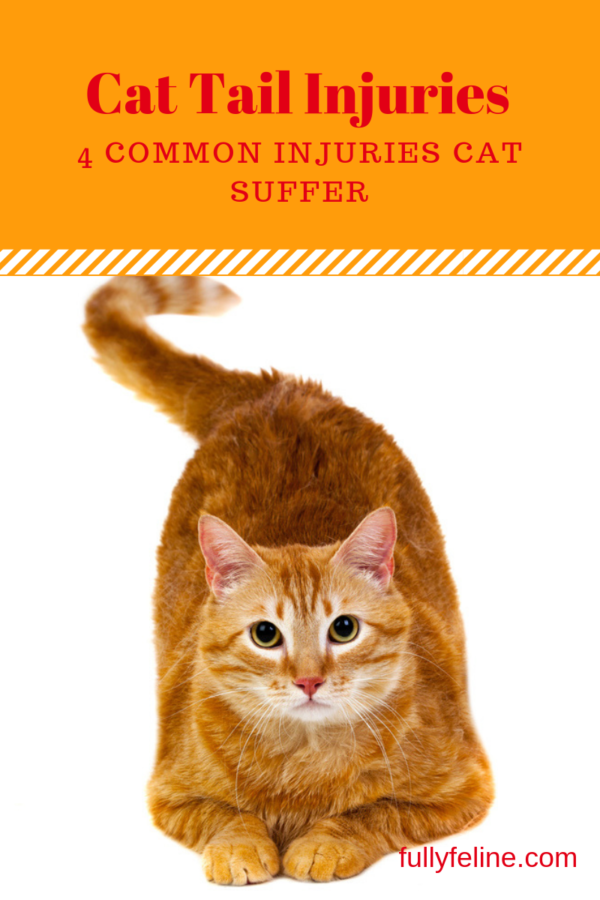Cats are so quiet we often don’t realize they’re near. This can lead to cat tail injuries from rocking chairs rocking on them, a door closing on them, or a misstep when we’re going about our day.
The April 2019 issue of the Catnip newsletter discusses four common cat tail injuries:
Contusions
This is another term for bruise. Contusions are usually superficial with no deep injury. They often occur in the tail itself, or the muscles that give cats the ability to swish their tail. The bruises cause soreness, but usually no long-term damage.
Lacerations
Laceration is another word for cut. This cat tail injury causes bleeding, and may require vet care to help it heal. Cuts don’t usually require surgery. Once the bleeding is stopped, lacerations usually heal on their own without complication.
Degloving
This cat tail injury happens when the tail is yanked and twisted, often the result of a cat being struck by a car. The skin is stripped off, causing bones and tendons to be exposed. This injury requires immediate veterinary care. Depending on the extent of the injury, a portion of the tail or the entire tail will need to be removed.
Fractures
A cat’s tail contains around 20 bones, which unfortunately leaves many opportunities for injury.
Depending on the extent and location of any broken bones, tail fractures sometimes heal on their own. The cat may have a bump or permanent crook in his tail.
More serious tail fractures, especially those near the cat’s body may interfere with blood flow to the tail and corresponding nerves. This can take away any feeling in the tail, and lead to further injury.
Without having feeling in his tail, a cat won’t know if something is injuring him further, and will not be able to move the tail to escape injury.
Some tail fractures can be corrected via surgery, but cat guardians often opt to have the tail amputated due to possible surgical complications later.
Cats are very adaptable, and learn other ways to compensate for the loss of a portion or all of their tail. If you notice a cat tail injury that does not seem to be healing, contact your veterinarian immediately.






